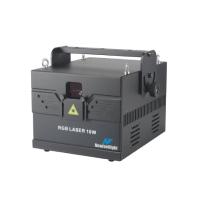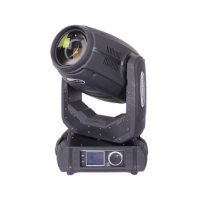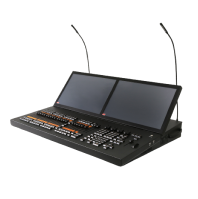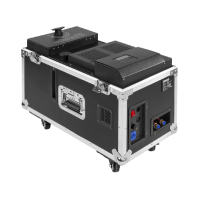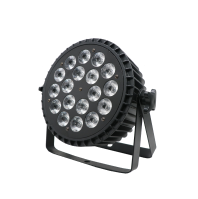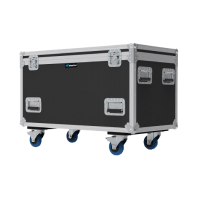Table of Contents
- 1. Why Beam Divergence Is a Critical Spec
- 2. Spot Angle and Beam Diameter: Defining Visual Precision
- 3. Case in Point: How Beam Control Impacts Real Shows
- 4. Why Not All High-Powered Lasers Perform the Same
- 5. Control, Safety, and Real-World Usability
- 6. Choosing the Right Laser for Your Event or Rental Inventory
- Final Thoughts: Precision Over Power
In the professional stage lighting industry, power isn’t everything. While high-wattage laser projectors often catch the eye of buyers, the most experienced lighting designers know that laser beam quality, divergence, and spot angle are the real differentiators when it comes to brightness, clarity, and projection performance—especially in large venues or demanding outdoor environments.
At Newfeel Light, we work closely with production companies, event engineers, and rental businesses globally. Through this lens, we’ve seen how often performance gaps arise not from power shortages, but from overlooking beam control. This guide breaks down the essential specifications that professionals should evaluate—and why Newfeel Light laser systems are engineered with these factors front and center.
1. Why Beam Divergence Is a Critical Spec
Laser beam divergence refers to how much a laser beam spreads as it travels away from the source. Measured in milliradians (mrad), divergence directly impacts how crisp and bright your laser looks at a distance.
A beam with less than 1.0 mrad divergence remains tight, focused, and powerful across long distances.
A higher divergence (e.g., greater than 1.5 mrad) will spread out more quickly, reducing visual impact—even with higher wattage.
This is especially important in outdoor concerts, festivals, and stadium shows, where throw distances exceed 50 meters. A laser with low divergence will maintain sharp mid-air effects, while high-divergence beams fade and blur, compromising the entire visual experience.
2. Spot Angle and Beam Diameter: Defining Visual Precision
Spot angle (sometimes referred to as beam angle) determines how wide the beam is when it exits the laser aperture. In professional applications—like logo projection, text, or animated graphics—a narrow spot angle ensures clean, high-contrast visuals that are legible and defined.
In venues with heavy haze or fog, tighter spot angles help cut through the atmosphere, delivering brighter and more directional effects. In contrast, wide beam angles may dilute the intensity, especially when competing with other lighting or LED effects.
3. Case in Point: How Beam Control Impacts Real Shows
Here’s where these specs matter most:
✅ Long-Throw Outdoor Events
For events like car shows, concerts, or open-air festivals, beam divergence under 1.3 mrad is recommended. A system like Newfeel Light’s A3 Series features a focused beam profile, supported by a 30KPPS scanning system, optimized for long-distance clarity. Whether you’re projecting animated content or atmospheric beams, low divergence ensures visual consistency from front row to back.
✅ Indoor Clubs & Theaters
In enclosed venues, divergence still matters—but spot control becomes more critical. The Newfeel SF5, with its less than 1 mrad beam angle, is designed to maintain visual sharpness while navigating through thick haze, ambient lighting, or crowded stages. That’s what makes it ideal for high-output environments where clarity is non-negotiable.
4. Why Not All High-Powered Lasers Perform the Same
A common misconception in laser procurement is assuming more watts equals more impact. But that’s not always true.
A 10W RGB laser with a tight beam and proper optics can often outperform an 18W system with poor divergence or inadequate cooling. It’s the optical engineering and thermal stability, not just the diode power, that determines whether your beam holds its shape under pressure.
At Newfeel Light, our flagship models like the A3 and SF5 don’t just prioritize power—they use:
Top-tier laser diodes with optimized wavelengths (e.g., 638nm red, 520nm green, 455nm blue)
Advanced beam shaping to maintain consistent divergence under prolonged use
Integrated cooling systems (silent or forced-air) to support stable output in demanding conditions
5. Control, Safety, and Real-World Usability
Professional laser equipment must be more than technically powerful—it needs to be usable, safe, and compliant:
DMX512, ILDA, and Master/Slave modes are essential for integration into complex lighting systems.
Remote APP control and auto-play features enable simplified operation for multi-venue or rental setups.
Safety functions like signal-loss shutoff, single-beam protection, and beam masking ensure compliance with public safety standards.
Both the A3 and SF5 series are built with IP65–IP66 waterproof housings, allowing you to deploy them in harsh environments—rain, fog, smoke, and even dusty festival setups—without compromising safety or performance.
6. Choosing the Right Laser for Your Event or Rental Inventory
Here’s how to align product specs with use cases:
Don’t just spec for wattage—spec for clarity, compatibility, and environmental performance.
Final Thoughts: Precision Over Power
As the entertainment and events industry becomes more technically demanding, lighting professionals need equipment that’s built for precision, reliability, and integration. Beam quality, divergence, and spot angle aren’t minor specs—they’re the factors that separate an average laser show from a world-class performance.
At Newfeel Light, we engineer laser systems for professionals who understand the value of clarity, control, and safety. Whether you're lighting a high-end wedding or delivering a multi-stage festival experience, our lasers are built to perform—visibly and technically.
Interested in product demos or B2B pricing? Reach out to the Newfeel Light team to get spec sheets, case studies, or live beam test videos tailored to your use case.








